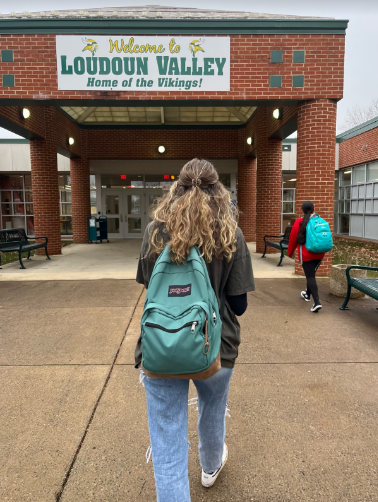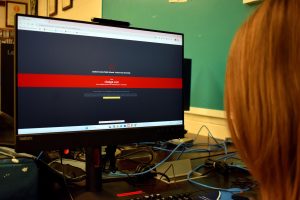LCPS’s bell schedule is a colossal mess—but it doesn’t have to be
February 16, 2023
The bell rings, and a flood of students rush out the doors of Loudoun Valley High School. With the school day complete, it’s time for sports, work, homework, relaxation and fun, but something’s not right: the clock is already chipping away at the evening and the sun has long begun to set.
With school ending at 4:20, students and teachers are left with limited time to relax or accomplish other tasks after the challenges of academia. Instead of having school hours positioned far too late in the day, LCPS must account for students’ input and revise the schedule from a 9:30 first bell to an earlier start time.
On Jan. 20, 2022, former superintendent Scott Ziegler announced LCPS would be adjusting school schedules to “increase the reliability and safety of transporting students and on-time arrival” in the 2022-2023 school year. Various changes were made throughout the county, including shifting the start time of elementary schools back by 30 minutes, the start time of middle school back by 5-25 minutes and the start times of high schools forward by 15-20 minutes.
The announcement, made amid a crisis of tardiness and a massive shortage in school bus drivers, sought to rectify uncoordinated hours with childcare facilities and shifted bus pickup times by changing school hours.
In theory, this schedule sounds perfect: start times are spread out, allowing traffic to dissipate between rush hours, bus drivers are given the opportunity to navigate their routes comfortably and better attendance is promoted among older demographics.
However, when put into action, the new timetable isn’t so great.
From a high school perspective, a start time of 9:30 a.m. and an end time of 4:20 p.m. aren’t ideal. Although the seven hours of learning in between are necessary, school hours akin to a 9-to-5 job don’t work for most kids.
In the hours before school begins, there seems to be an awkward dynamic: students have excess time, but just barely enough to accomplish anything substantial. Although some appreciate the time in the morning that can be spent sleeping, the overall sentiment students reflect is frustration with such a late start. Ultimately, after the last bell, high schoolers find themselves with a very limited number of hours to spend.
Transportation also manages to eat up lots of the evening for students and teachers, whether they are drivers or bus riders, with some arriving home as late as 7 p.m. after navigating chaotic parking lots and traffic.
Those who participate in extracurriculars are also challenged with late nights, as practices and clubs start and end late. Winter Guard members have practice from 7 to 10 p.m., sometimes even later. Students and administrators staying this late at school poses transportation risks, as there can be lighting and safety issues during the dark after school hours. Even those who might not have extra commitments find it difficult to accomplish every necessary task and assignment after school.
The cycle is vicious, with late nights taking a toll on the sleep, social and mental health patterns of those within Loudoun this year.
In contrast, our neighbors in Clarke and Prince William Counties face warning bells ranging between 7:15 and 7:55 a.m. While the start time seems alarmingly early and on track with our elementary schoolers’ schedules, students in Clarke are often home by 4 p.m. In Prince William, most are out of the parking lot by 2:30 p.m.
Changing the high school schedule to one comparable to elementary schools’ would improve productivity and wellbeing among students and administrators. Not only would there be more daylight for extracurriculars and sports, but more time in the evening to spend time with loved ones.
Overall, this current schedule might address some logistical issues that have cropped up in the school system, but they fail to serve the needs of students and staff alike on a personal level. It is undoubtedly hard to balance the desires of individuals with the needs of a system, but the timeline on which schools are currently operating must be reevaluated.







